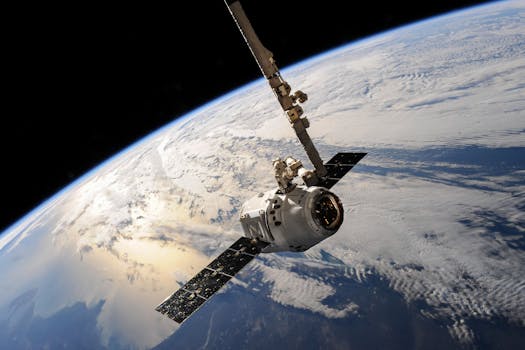GEO Satellites: Understanding the Technology and Applications of Geostationary Satellites
GEO satellites, or geostationary satellites, are a type of satellite that orbits the Earth at an altitude of approximately 36,000 kilometers, remaining stationary relative to a fixed point on the equator. This unique characteristic allows GEO satellites to continuously observe and communicate with a specific region of the Earth, making them an essential component of modern satellite technology. In this article, we will delve into the world of GEO satellites, exploring their technology, applications, and significance in various fields.
How GEO Satellites Work
GEO satellites are placed in a geostationary orbit, which is a circular orbit that matches the Earth’s rotational period. This means that the satellite completes one orbit around the Earth in exactly 24 hours, remaining synchronized with the Earth’s rotation. As a result, the satellite appears to be stationary in the sky, relative to a fixed point on the equator. This characteristic allows GEO satellites to maintain continuous communication with a specific region of the Earth, making them ideal for applications that require constant coverage.
The technology behind GEO satellites is complex and involves a range of systems, including propulsion, power, and communication. GEO satellites are typically equipped with solar panels, which provide the necessary power for the satellite’s systems. They also have a range of communication equipment, including transponders, antennas, and receivers, which enable them to transmit and receive data to and from Earth.
Applications of GEO Satellites
GEO satellites have a wide range of applications, including telecommunications, weather forecasting, navigation, and Earth observation. In the field of telecommunications, GEO satellites are used to provide broadband internet, television broadcasting, and mobile phone connectivity to remote and underserved areas. They are also used for weather forecasting, providing images and data that help meteorologists predict weather patterns and storms.
In the field of navigation, GEO satellites are used to provide location information and timing signals, which are essential for GPS technology. They are also used for Earth observation, providing images and data that help scientists study the Earth’s climate, oceans, and land surfaces. Additionally, GEO satellites are used for military and defense applications, such as reconnaissance and communication.
Significance of GEO Satellites
GEO satellites play a crucial role in modern society, enabling global communication, navigation, and weather forecasting. They have revolutionized the way we communicate, providing internet and phone connectivity to remote and underserved areas. They have also improved our ability to predict weather patterns and storms, saving lives and reducing damage to infrastructure.
The significance of GEO satellites extends beyond their practical applications. They have also enabled scientific research and exploration, providing a unique perspective on the Earth and its systems. They have helped us understand the Earth’s climate, oceans, and land surfaces, and have enabled us to study the Earth’s natural resources and environment.
Future of GEO Satellites
The future of GEO satellites is exciting and promising, with new technologies and applications emerging all the time. The development of high-throughput satellites, which offer faster and more efficient communication, is expected to revolutionize the telecommunications industry. The use of GEO satellites for Earth observation and navigation is also expected to increase, with new missions and applications being developed all the time.
However, the future of GEO satellites is not without challenges. The increasing number of satellites in orbit is creating concerns about space debris and congestion, and the development of new technologies is raising questions about the sustainability and environmental impact of satellite technology. Nevertheless, the benefits of GEO satellites are clear, and their significance in modern society is undeniable.
